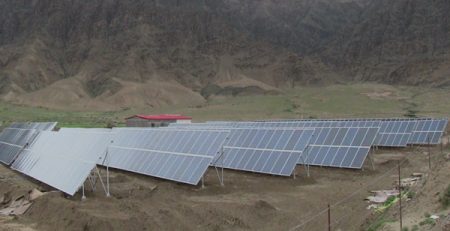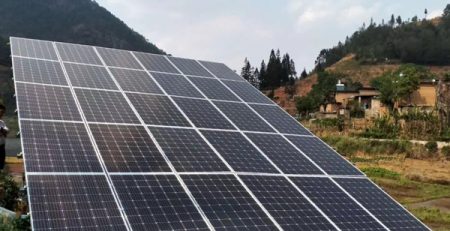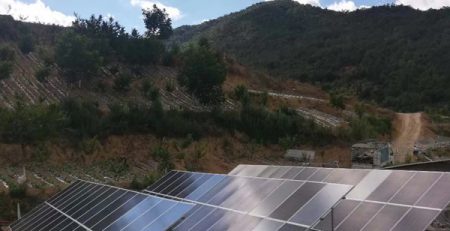FRAMED OR FRAMELESS? NEW INSTALLATION SOLUTIONS FOR DOUBLE
GLASS PHOTOVOLTAIC MODULES
The debate about whether a double-glass module has a frame or no frame is a headache for all manufacturers of double-glass modules. Different design institutes, EPCs, investors, and owners have different ideas and requirements.
Nowadays, a new type of double-glass module mounting frame almost perfectly solves all the concerns from the solar panel factory to the owner.
As can be seen from the figure above, the frame is only installed on both sides of the double-glass module, which is suitable for various roof photovoltaic systems, including ground-mounted photovoltaic power plants, and ground photovoltaic power stations. Not only is it very easy to install, it also does not affect the thermal performance of the solar panels.
It is especially effective for American industrial and commercial / domestic roofs that use double-glazed / double-sided modules as single-sided modules, because the design is particularly beneficial to the heat dissipation and ventilation of the roof / colored steel tile / sloping roof photovoltaic modules.
In addition, the design has the following characteristics:
1. Easy installation, whether it is installed on a bracket or color steel tile or other roof surface;
2.Light weight, will not affect the bearing capacity of color steel tile roof and support too much;
3.Maintain the effect of easy cleaning of the component surface, no dust accumulation, self-cleaning effect in natural state;
The frame can also be designed in the form of modules that can be embedded on both sides, that is, the same frame is used as a frame shared by two double-glass modules, and is installed on a bracket or roof to achieve continuous arrangement of photovoltaic modules.
According to the developer’s verification, this new design solves the problem of rapid installation and cracking of the dual-glass module. The installed dual-glass photovoltaic system has a working temperature 4-6 ° C lower than other solutions, which greatly increases the power generation.
For roof photovoltaic systems, single-glass modules can also use this frame, without the need for the module’s aluminum frame at the factory. However, component suppliers need to use this framework to verify IEC related performance tests.




